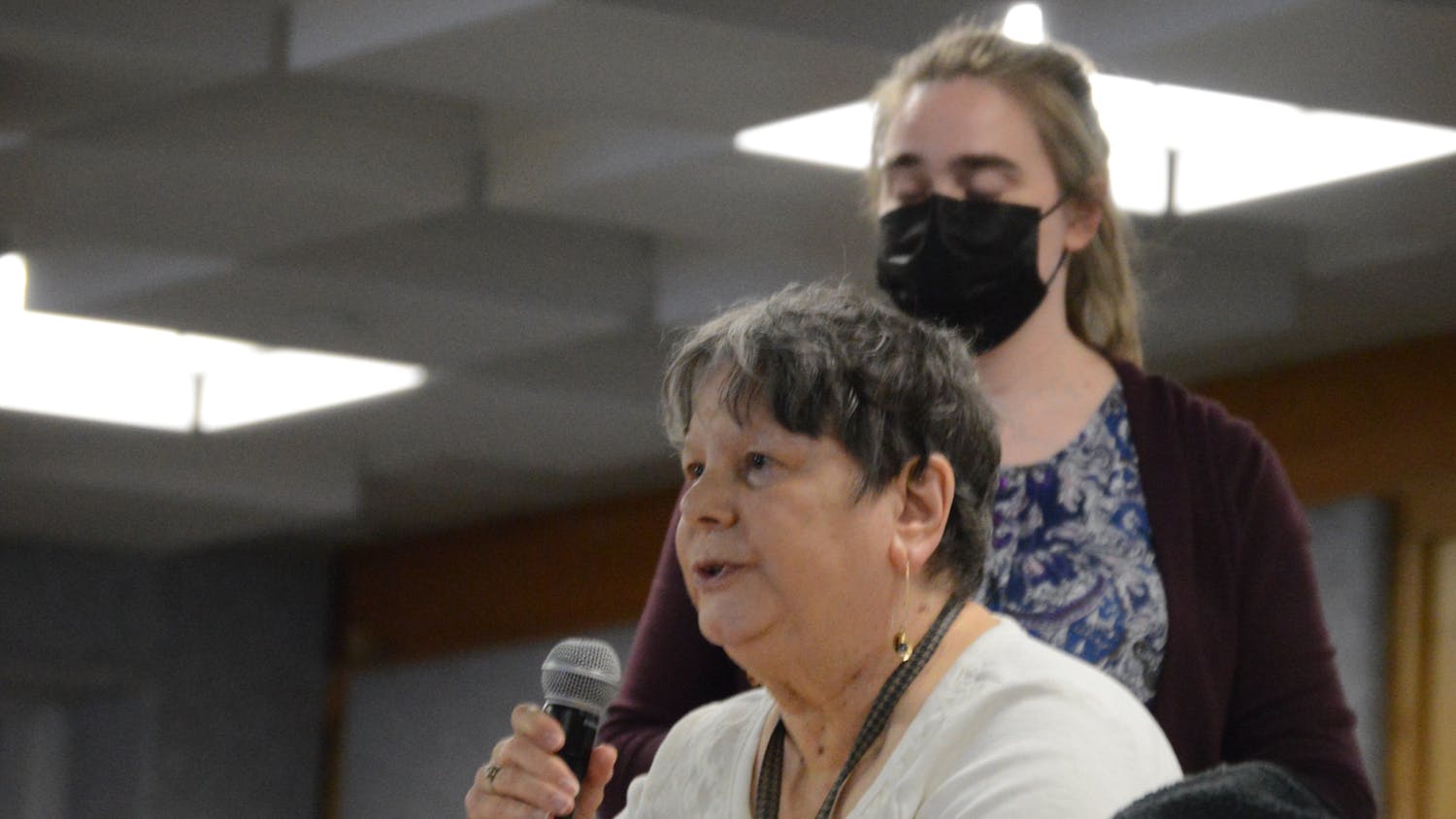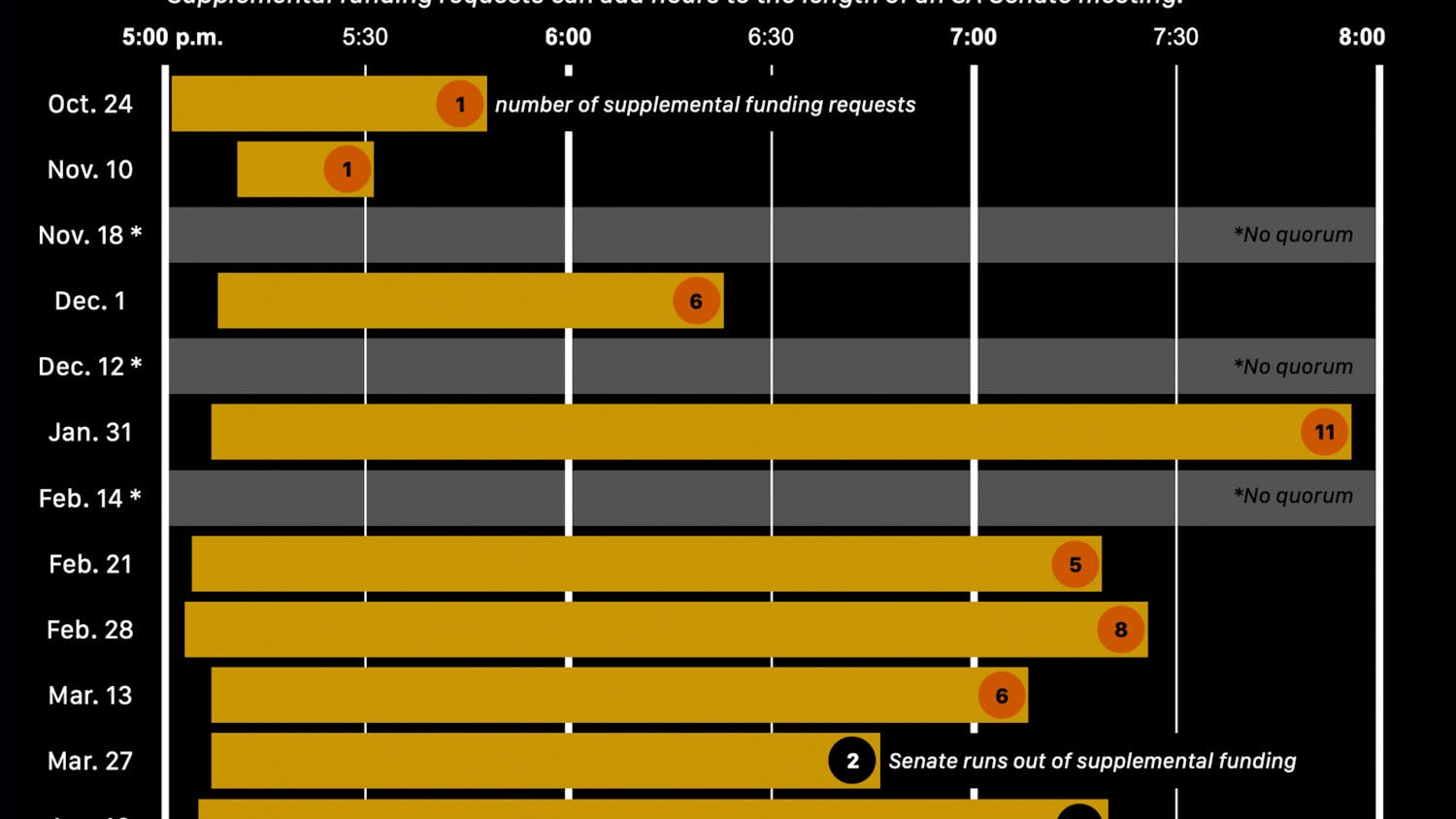UB’s Women’s Health Initiative has helped prevent 126,000 fewer women develop breast cancer during a 10-year period.
Jean Wactawski-Wende, the dean of the School of Public Health and Health Professions who has been part of the WHI since it was established at UB, discussed some of the groundbreaking findings in cancer research the univeristy has made to the UB Council on Monday.
Wactawski-Wende and biomedical engineering professor Jonathan Lovell spoke in front of the council about ongoing cancer and heart disease research happening on both North and South Campus. President Satish Tripathi was absent from the meeting due to the recent death of his father. The council held a moment of silence for Tripathi’s father at the start of the meeting.
WHI was originally a 12-year study about the major causes of diseases and death in postmenopausal women, but is now in its 23rd year and was recently extended until 2020.
In 1993, 162,000 women – 4,000 of whom were from Western New York – that have or had breast cancer, colorectal cancer and coronary heart disease reported to the WHI.
“As of today, over 90,000 of those women are still living and 96 percent of them are still reporting back to the WHI,” Wactawski-Wende said.
She said of the 40 WHI centers in the United States, Buffalo is one of the leading organizations and the coordinator of the entire northeast region, including Harvard and Brown University centers.
Wactawski-Wende talked about a major breakthrough made by the WHI back in 2002. In the early 2000s, many people believed hormone therapy was one of the best ways to alleviate or cure cancer, however WHI found this was not the case.
“At that time we realized that hormone therapy was not preventative of chronic disease and actually increased risk of heart disease, stroke, pulmonary emboli and breast cancer,” Wactawski-Wende said. “This might have one of the most important findings at the time on an international scale.”
The finding led to a decrease in prescriptions of a popular hormone therapy drug, and therefore led to less cases of breast cancer across the world. It is estimated there were 126,000 fewer breast cancer cases because of the study. Wactawski-Wende said the trial cost $260 million, but also is estimated to have saved the United States health care system more than $37 billon.
Lovell, who has a focus in nanomedicine and phototherapy research, spoke about key anti-cancer findings happening on North Campus.
“Nanomedicine is research of properties on a scale 1,000 times smaller than a human hair,” Lovell said.
Lovell is currently working on developing a more effective anti-cancer drug using chlorophyll and phototherapy.
He said by using chemophototherapy and the green properties of chlorophyll, laser technology is able to release anti-cancer drug from the liposome and treat a tumor patient.
“This is a new paradigm for tumor treatment and we are excited about it,” Lovell said.
As the study is still in its pre-clinical stage, clinical trials may still be 10 years away.
Chronic disease research was not the only topic on the agenda for Monday morning’s meeting.
Chief of Staff Beth Del Genio, speaking on behalf of Tripathi, said that extension of NYSUNY 2020 is the university’s number one legislative priority.
“It has played a significant role in keeping education across SUNY schools affordable,” Del Genio said.
Melissa Kathan, the UB Council student representative, also spoke extensively on NYSUNY 2020, which limits the amount SUNY campuses can raise tuition each year, and on issues of diversity on college campuses.
Kathan said that there is advocacy and leadership committee comprised of the seven student governments at UB, which has been looking into the issues of diversity and allowing students to express their opinions, in light of the “White Only” art project controversy.
Evan Schneider is the news editor and can be reached at evan.schneider@ubspectrum.com





